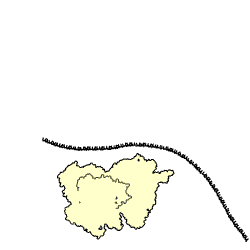Nanobiotechnology
Nanobiotechnology
Nanobiotechnology is an interdisciplinary field that combines principles of nanotechnology and biology. It involves the application of nanoscale tools and techniques to study biological systems and develop new technologies for medical and industrial applications.
Overview[edit | edit source]
Nanobiotechnology encompasses a wide range of research areas, including the development of nanomaterials, nanodevices, and nanosensors for biological and medical applications. The field aims to improve the understanding of biological processes at the molecular level and to create innovative solutions for diagnosing and treating diseases.
Applications[edit | edit source]
Medical Applications[edit | edit source]
Nanobiotechnology has significant potential in the field of medicine. It is used in the development of drug delivery systems, diagnostic tools, and therapeutics.
- Drug Delivery: Nanoparticles can be engineered to deliver drugs directly to targeted cells, improving the efficacy and reducing side effects of treatments.
- Diagnostics: Nanosensors can detect biomarkers at very low concentrations, enabling early diagnosis of diseases.
- Therapeutics: Nanotechnology is used to develop new therapies, such as gene therapy and cancer treatment.
Industrial Applications[edit | edit source]
In addition to medical applications, nanobiotechnology is used in various industrial processes.
- Bioremediation: Nanoparticles can be used to clean up environmental pollutants.
- Food Industry: Nanotechnology is applied in food packaging and preservation to enhance food safety and shelf life.
Techniques[edit | edit source]
Nanofabrication[edit | edit source]
Nanofabrication techniques are used to create nanoscale structures and devices. These techniques include lithography, self-assembly, and nanolithography.
Molecular Imaging[edit | edit source]
Molecular imaging techniques, such as atomic force microscopy and scanning electron microscopy, allow scientists to visualize biological structures at the nanoscale.
Bioconjugation[edit | edit source]
Bioconjugation involves attaching biomolecules to nanoparticles to create functionalized nanostructures for specific applications.
Challenges[edit | edit source]
Despite its potential, nanobiotechnology faces several challenges, including the need for standardized protocols, understanding the long-term effects of nanomaterials, and addressing ethical concerns related to the use of nanotechnology in biology.
Future Directions[edit | edit source]
The future of nanobiotechnology holds promise for further advancements in personalized medicine, regenerative medicine, and the development of smart materials. Ongoing research aims to overcome current challenges and expand the applications of nanotechnology in biology.
Related pages[edit | edit source]
Search WikiMD
Ad.Tired of being Overweight? Try W8MD's physician weight loss program.
Semaglutide (Ozempic / Wegovy and Tirzepatide (Mounjaro / Zepbound) available.
Advertise on WikiMD
|
WikiMD's Wellness Encyclopedia |
| Let Food Be Thy Medicine Medicine Thy Food - Hippocrates |
Translate this page: - East Asian
中文,
日本,
한국어,
South Asian
हिन्दी,
தமிழ்,
తెలుగు,
Urdu,
ಕನ್ನಡ,
Southeast Asian
Indonesian,
Vietnamese,
Thai,
မြန်မာဘာသာ,
বাংলা
European
español,
Deutsch,
français,
Greek,
português do Brasil,
polski,
română,
русский,
Nederlands,
norsk,
svenska,
suomi,
Italian
Middle Eastern & African
عربى,
Turkish,
Persian,
Hebrew,
Afrikaans,
isiZulu,
Kiswahili,
Other
Bulgarian,
Hungarian,
Czech,
Swedish,
മലയാളം,
मराठी,
ਪੰਜਾਬੀ,
ગુજરાતી,
Portuguese,
Ukrainian
Medical Disclaimer: WikiMD is not a substitute for professional medical advice. The information on WikiMD is provided as an information resource only, may be incorrect, outdated or misleading, and is not to be used or relied on for any diagnostic or treatment purposes. Please consult your health care provider before making any healthcare decisions or for guidance about a specific medical condition. WikiMD expressly disclaims responsibility, and shall have no liability, for any damages, loss, injury, or liability whatsoever suffered as a result of your reliance on the information contained in this site. By visiting this site you agree to the foregoing terms and conditions, which may from time to time be changed or supplemented by WikiMD. If you do not agree to the foregoing terms and conditions, you should not enter or use this site. See full disclaimer.
Credits:Most images are courtesy of Wikimedia commons, and templates, categories Wikipedia, licensed under CC BY SA or similar.
Contributors: Prab R. Tumpati, MD


